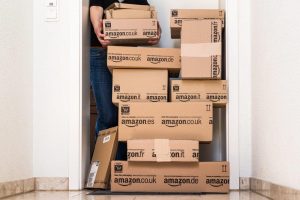 With all the hype these days about “the end of bricks and mortar retail,” it’s interesting that the world’s largest online retailer just bought a very physical, bricks and mortar national grocery store chain. Does Amazon know something about the limitations of on-line retail? Their acquisition of the nationwide gourmet natural food chain, Whole Foods, speaks volumes.
With all the hype these days about “the end of bricks and mortar retail,” it’s interesting that the world’s largest online retailer just bought a very physical, bricks and mortar national grocery store chain. Does Amazon know something about the limitations of on-line retail? Their acquisition of the nationwide gourmet natural food chain, Whole Foods, speaks volumes.
We have long held that the demise of bricks and mortar was greatly exaggerated. This opinion is based on our own experience building a national brand in bricks and mortar retail. Even though, according to the Department of Commerce, online is the fastest growing segment of retail sales, it’s still a small fraction of overall retail sales. No doubt, it will continue to take a bigger bite out of bricks and mortar, but totally replace it? Not anytime soon.
Physical stores still have several advantages over online retail:
- Established Customers are loyal to the physical store brand. They trust “their” store to keep the brands they want in stock.
- It’s more efficient for customers to pick up consumer packaged goods and perishables at one physical location, in one trip, than to order hundreds of them on line every month.
- There’s no “free” delivery. Fulfillment centers and common carriers required in direct-to-consumer businesses all get paid, no matter what the online retailer says about “free” delivery. Somebody, the retailer, the producer, or the customer, pays for delivery.
- Social Interaction is a form of entertainment found in retail stores. Customers like social interaction with other shoppers and helpful clerks.
- Tactile contact and discovery helps make the sale. Physically comparing like products before buying, and stumbling upon an impulse notion buy, are attractive to physical retail store consumers.
But we think there are other reasons why Amazon bought Whole Foods:
- Tribal-like followings of both enterprises can merge, resulting in greater support for each other.
- Online promotions on Amazon will boost sales at Whole Foods and increase Whole Foods business.
- Customer package pick up of anything purchased on Amazon will reduce Amazon’s delivery costs.
This last reason is the real telling point. It’s cheaper for Amazon to have its online customers pick up their purchases at a neighborhood location, rather than deliver them to their door. Beyond the delivery costs, they save on packaging, handling and drayage. They may even save on the cost of returns since customers will be able to see their purchases before taking them home, and thus avoid replacement deliveries.
Is this the way of the future? Online sales won’t kill bricks and mortar, but may actually save it! Neighborhood delivery for online purchases makes sense, especially when delivered to a place customers already go at least once a week: their neighborhood supermarket.
Look for more retailers offering online sales pick up at their stores. It’s a traffic generator for retail stores and a delivery savings for online retailers.
But first, the online retailers may have to come clean about the cost of delivery. In other words, they may have to start charging for it and then offering “discounts” for neighborhood pickups. It will be interesting to see how Amazon handles breaking the “no free delivery” news to their customers, while providing incentives for online purchases picked up at neighborhood pick-up centers.
Having been in the CPG business, it’s obvious to us that the sheer weight of low-priced (under $20) consumer goods is most efficiently handled when the customer meets the seller half way.

